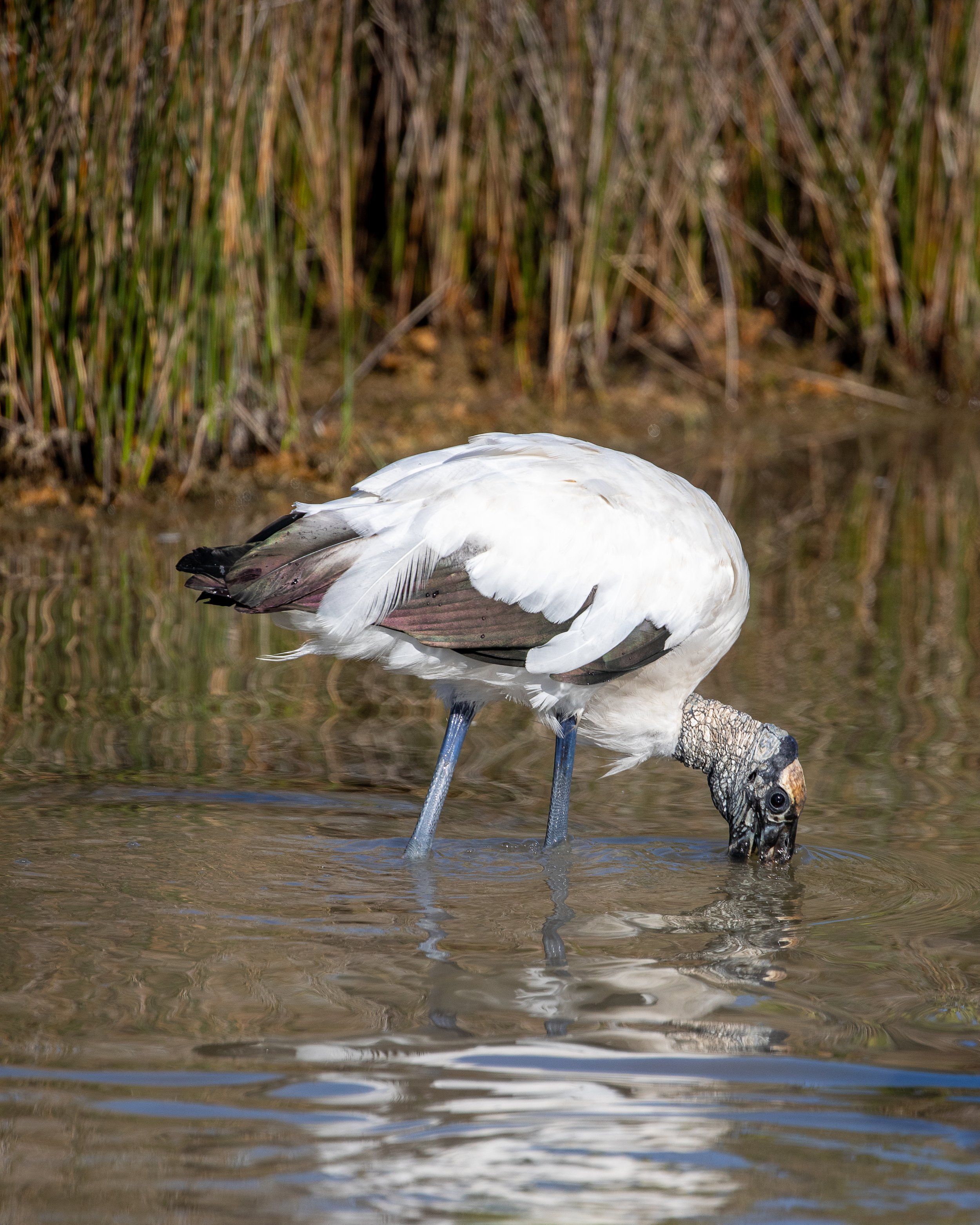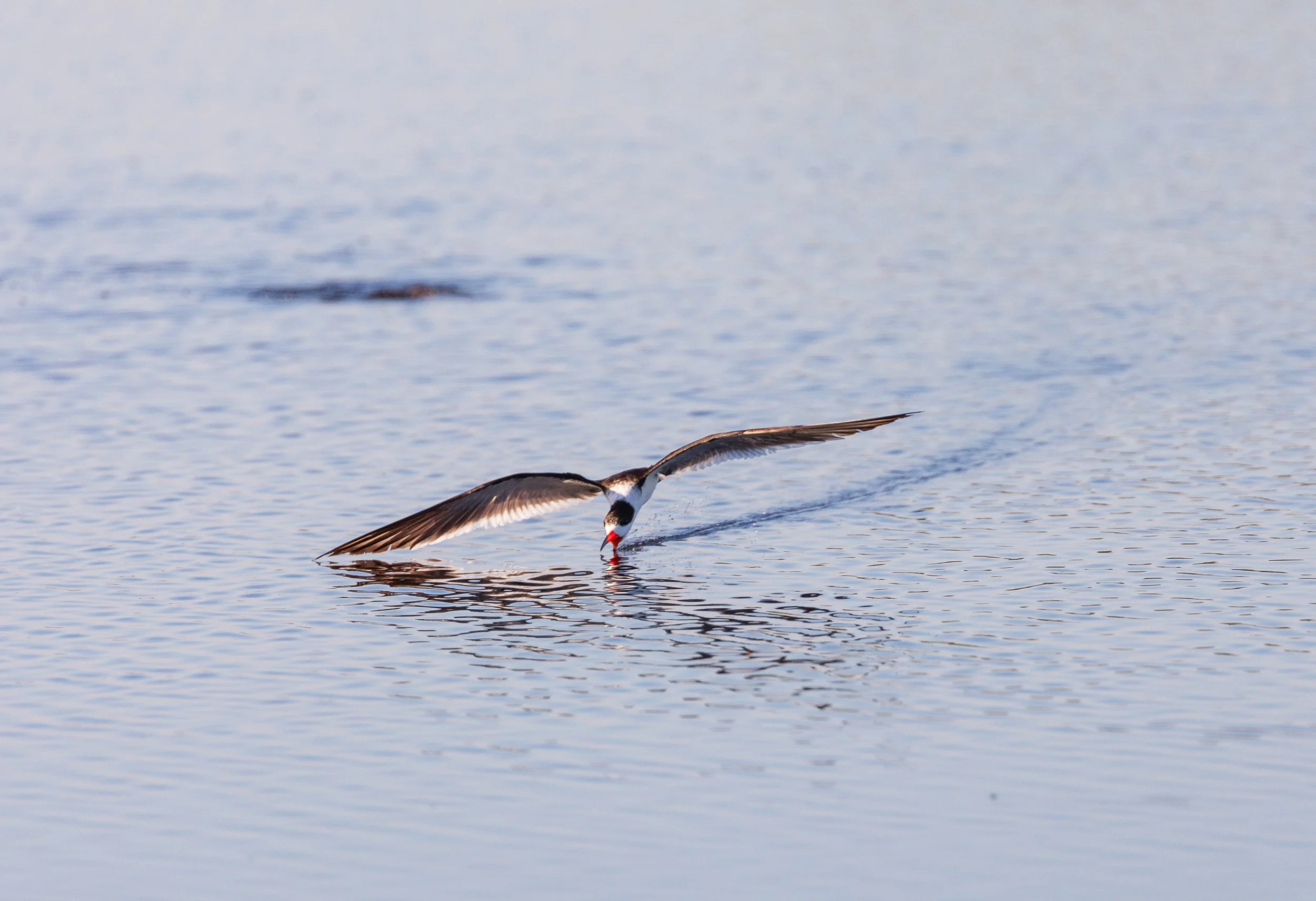So Many Birds, So Little Time: Merritt Island Wildlife Extravaganza
Breakfast time for American White Pelicans.
Last September marked my previous visit to Merritt Island NWR, making this return long overdue, especially during winter, the migration season for various bird species. The day began with a picturesque sunrise and the refuge welcomed me with a chorus of bird songs.
A Yellow-rumped warbler diligently forages for its next meal, blending seamlessly with the palm tree's seed branch.
Among them, the Northern Flicker, Mourning Dove, Female Red-winged Blackbird, Great Blue Heron, and Wood Storks captivated my attention.
Florida is home to many wading birds, but none look as prehistoric as the wood stork. Wood storks are Florida's largest wading birds and the only stork species breeding in the United States, with nesting activity expected from February to March. These bald-headed birds navigate wetlands, dipping their hefty bills into the water in search of fish and crustaceans. Florida populations have been on the declined as water management has become a difficult problem.
Wood stork is a skilled aviator, gliding gracefully on thermals, its elegant neck and long legs stretched out in flight.
Suddenly, a Black Skimmer graced the scene, flying low over the water with its beak open, a display resembling an aerial ballet.
Impossible to miss the Black Skimmer's distinctive reddish/orange-and-black, laterally compressed bill, with the lower mandible extending farther than the upper.
Soon after, a Spoonbill emerged, feeding in shallow waters with a slow, side-to-side swing of its head. Roseate spoonbills, just like flamingos, acquire their vibrant hues from the pigments of the crustaceans in their diet.
Roseate Spoonbill snapping up a tiny fish.
Ducks also joined the aquatic spectacle in the shallow waters!
‘Bottoms Up’ - synchronized duck butt shot.
Hooded Merganser entering the scene. It continued diving into the water, capturing fish and other prey. This hunting style gains more success, because of the Hooded Merganser ability to see underwater.
A pair of Northern Shovelers were busily foraging in shallow wetlands as well. The uniquely shaped bill and overall color palette caught my eye.
Female Northern Shovelers have a light brownish head with a blackish crown and a brownish speckled body.
Male Northern Shoveler has blocky color palette, with its bright white chest, rusty sides, and green head (the head was covered in mud from foraging).
Northern Shoveler wing flap.
And then there were Pied-billed Grebes! Grebes, like ducks, spend most of their time on the water, but notable differences set them apart. Unlike ducks, grebes have thick triangular bills and lobed feet instead of webbed. While ducks dabble for food, grebes opt for a more dramatic approach, diving underwater to hunt for bugs, crustaceans, or fish. Their disappearing act beneath the water's surface adds a touch of unpredictability to their graceful presence.
There are no outward differences between the males and females.
Exploring the lives of creatures that I encounter, both big and small, is a remarkable experience. With each outing I’m rewarded with not only a fleeting glimpse into their world, but also an opportunity to appreciate the beauty that surrounds us in every moment. I sincerely thank you for taking the time to visit my blog and sharing in these meaningful moments.




















